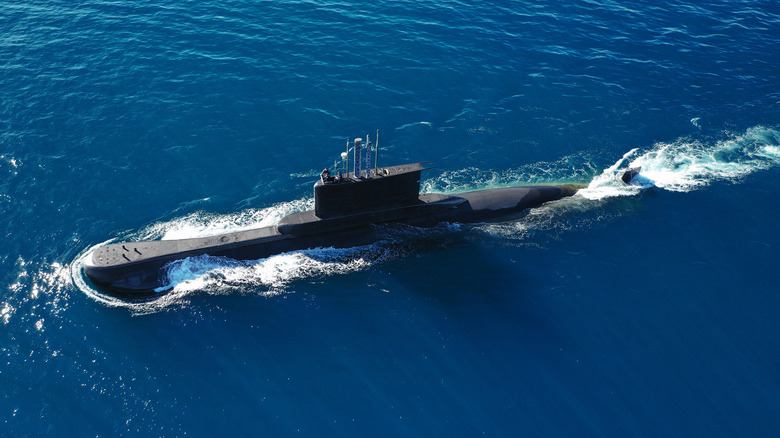Escaping From A Sunken Submarine: Is It Possible?
Humans, like all animals, are physiologically built to survive in somewhat particular environmental conditions. It's why we generally have issues when adjusting to significantly higher or lower altitudes (i.e. mountains, valleys, etc). It's also why we don't live in the ocean, despite the fact that it's obviously capable of sustaining an immense variety of life.
Because of this, humans have to rely on our ability to create (or at least use) tools in order to spend more than a few moments in conditions that would otherwise prove fatal. Hence why we have SCUBA gear, submarines, submersibles, and so on. But the problem with tools and equipment is that they can sometimes fail us, and when our bodies aren't built for a particular environment, that creates a problem.
As nightmarish as it may be to think about, deep sea vessels can and have run into problems — getting stuck on sea beds, being damaged and unable to surface, and, unfortunately, implosions. But these situations aren't always hopeless. In the event that a sub is stranded, escape can be possible in some cases. It Depends on a wide variety of factors.
Please note that, while the techniques and technologies detailed below do have a history of occasional success, in most scenarios it's far safer to wait for rescue rather than attempt to escape from a sunken sub.
Distance (and pressure) matters
The biggest factor in escaping a stuck submarine is how deep you actually are in the ocean — because the likelihood of human survival drops significantly the further you go. While it may not be impossible for a person to leave a sub and make it to the surface alive from a depth of around 130 feet (40 meters), it's about the average for safe recreational diving. Any deeper and ever-increasing water pressure could become too much for your body to handle.
Similarly, the farther down you are the longer you'll have to hold your breath before getting to the surface of the water. Additionally, the water gets much colder as you go deeper, regardless of the above-water climate, so there's also the potential for temperature or thermal shock, which could make moving and thinking clearly more difficult.
But if someone was trapped in a sub that was roughly 100 feet or so underwater, making an unassisted break for fresh air is possible. Assuming the vehicle has a hatch that can be opened from the inside, you'll need to create a large enough gap between it and the hull to let water in. Then once the pressure inside the sub matches the pressure outside (i.e. the sub is filled with water), you should be able to push the hatch open and swimming or float to the surface.
What are you riding in?
Another significant factor in escaping a sub is the kind of sub you're in. A submarine is not a submersible (and vice-versa), and this will affect how possible an escape may be. Or at least how one can be attempted in the first place.
Since submarines are much larger than submersibles, particularly modern ones, they tend to have specialized pressure hatches that allow one or two people at a time to equalize inner and outer pressure in order to pop open a door and swim for the surface. Submersibles, on the other hand, aren't big enough for a separate pressure chamber so equalizing pressure will likely flood the entire space.
Submarines are also more likely to have gear specifically intended to escape when stranded on board. This equipment may include breathing apparatuses, floatation devices, or even specialized survival suits — which is all more than you're likely to find on a van-sized submersible.
The reality of the situation
But the unfortunate reality is that being stranded in a sub on the ocean floor is a scenario in which escape is unlikely, or even impossible, much of the time. Unless you find yourself in relatively shallow waters, chances are the pressure, frigid temperatures, or lack of oxygen would prevent a successful escape attempt.
With that said, most deep-sea vehicles are designed around fairly rigorous safety standards and will likely make use of more than one backup system in the event that something goes wrong. Meaning on the off chance you do end up stranded, there's bound to be at least a few built-in functions that will help the sub resurface or call for rescue.
So as stated before, in all but the most dire situations your best bet is to not attempt to leave the sub on your own. Instead, do your best to remain calm and wait for a rescue team. Chances are they were already on their way before you knew something went wrong.



